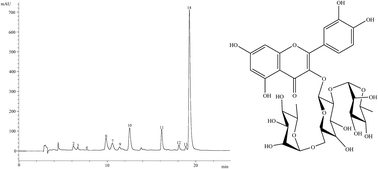Phytochemical characterization and antioxidant activity of the cladodes of Opuntia macrorhiza (Engelm.) and Opuntia microdasys (Lehm.)
Abstract
The genus Opuntia (Cactaceae) includes different plants well adapted to arid and semi-arid zones. These species are cultivated under restricted growth conditions, not suitable for the growth of other fruits/vegetables. The cactus pear is a well-known example inside Opuntia genus. Its young cladodes, also known as nopalitos, are frequently consumed and used in folk medicine due to their beneficial effects and phytochemical composition. Herein, hydrophilic and lipophilic extracts from cladodes of Opuntia microdasys and Opuntia macrorhiza were characterized. Furthermore, their antioxidant properties were compared to the corresponding phytochemical profile. Despite the phylogenetic proximity and similar geographical origin O. microdasys and O. macrorhiza showed significant differences in sugars, organic acids, phenolic compounds, fatty acids and tocopherols profiles. In particular, O. microdasys distinguished for having high contents in fructose, glucose, C6:0, C8:0, C12:0, C14:0, C14:1, C16:0, C18:3, C20:0, C22:0, C23:0, C24:0, SFA and tocopherols, and also for its higher DPPH EC50 values. O. microdasys by its side proved to have significantly higher amounts of trehalose, organic acids, C13:0, C16:1, C17:0, C18:0, C18:1, C20:1, C20:2 and MUFA. The obtained phytochemical profiles might be considered as useful information to select the best Opuntia species regarding a determined application of its natural extracts/isolated compounds.


 Please wait while we load your content...
Please wait while we load your content...